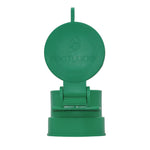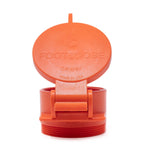You have no items in your shopping cart.
Unveiling the design of a Manhole: there are essential components of urban infrastructure, providing access to our underground utilities for maintenance and inspection. But have you ever wondered about the intricate design that goes into these ubiquitous structures? This blog post will explore the sophisticated engineering behind manhole construction.
The Anatomy of a Manhole
Top to Bottom Structure
- Manhole Lid: The visible part of a manhole, usually made from durable materials to withstand traffic and environmental conditions.
- Manhole Frame: Supports the lid and is designed to sit flush with the street surface, often equipped with a sealing system to prevent unwanted gas escape.
- Adjustment Rings: These rings accommodate height adjustments to align with the street grade, especially important during repaving projects.
The Subterranean Sections
- Eccentric Cone Section: This part narrows down from the frame, designed to minimize the surface area that pedestrians or vehicles can fall through, should the lid be open or displaced.
- Steps: Metal or reinforced plastic rungs are embedded into the manhole walls to provide access for utility workers.
The Core and Access
- Precast Barrel Sections: These cylindrical sections form the main structure of the manhole, extending down to the sewer lines. They are stacked to the required depth.
- Branch Sewers: Smaller pipes that connect to the main sewer line, allowing for the flow of waste and water from different parts of the city.

Design Considerations
Material Durability
- Manholes are typically constructed from precast concrete or steel, known for its longevity and strength.
- Lids can be made of cast iron or composite materials to offer secure and long-lasting coverage.
- Inside the Manhole you will need a Locking well plug to protected from insects, chemicals, and other contaminants
Safety Features
- Non-slip surfaces on the lid and steps for utility worker safety.
- Locking mechanisms to prevent unauthorized access.
Engineering for Flow
- Smooth interior walls to facilitate the uninterrupted flow of sewage.
- Sloped design aligning with the sewer lines to utilize gravity for sewage movement.
The Installation Process
Excavation and Placement
- Precise excavation is done to create a cavity for the manhole.
- Barrel sections are lowered and aligned over the main sewer.
Sealing and Finishing
- Joints are sealed with waterproof materials to prevent leakage.
- The top is finished to meet street grade, with the lid and frame installed last.
- Don't forget the Manhole Hooks for opening the lid for inspections.
Maintenance and Upkeep
Regular Inspections
- Manholes are inspected regularly to ensure structural integrity and functionality.
- Debris and sediment removal are part of routine maintenance.
Upgrades and Repairs
- Worn or damaged parts are replaced.
- Innovations like sealants and liners are used to extend the lifespan of the manhole.
The design of a manhole is a testament to practical engineering and thoughtful urban planning. While often overlooked, these structures are vital to maintaining the health and efficiency of our city's subterranean systems. The next time you walk over a manhole lid, consider the complex design and critical function that lie just beneath your feet.









